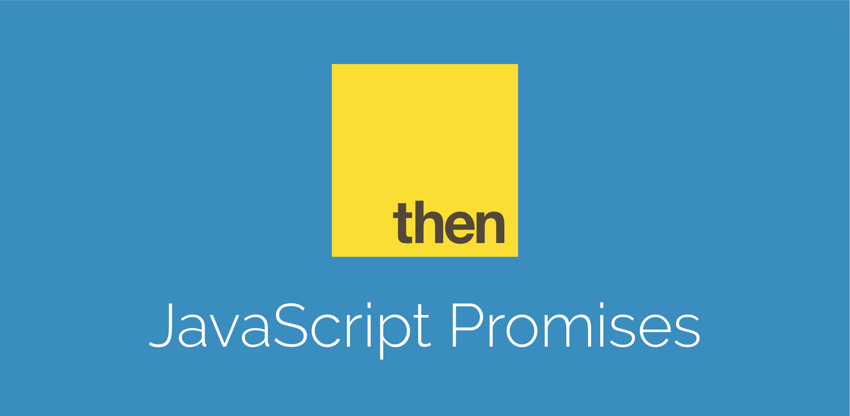
引子
先看一段代码:
如果有似曾相识的感觉,那么你在理解javascript中的promise道路上已经迈出了一步。如果完全懵逼,别怕,接下来我们通过例子来了解promise为何物。
作为新概念,一些人理解promise起来会有些困难,因为这需要思维上的转变。但是请相信我,经过几个实例的讲解,你会发现它的优雅:它使得让人头痛的异步代码写起来更为轻松,而且可以避免“回调大坑”(callback hell)。
promise背后的思想是:
promise代表的是异步操作的最终(eventual)结果
这意味着异步操作的结果并不能立即获取,而是要等到promise稳定了(settled)。
想想你在日常生活中做出承诺(promise)的例子:小时候,你出门对老妈说:我保证(promise)把垃圾带出去。这句话的意思是在稍后的某个时间点你会去做扔垃圾这件事并兑现你的承诺。也许几分钟,也许几小时,也许…
promise亦是如此。当一个函数返回一个promise,它其实是在说:嘿!我向你承诺,一旦完事,我将带着结果去找你!
举例
好啦,理论和术语的东西讲多了让人烦,下面我们来例证上面说的一堆话。
AJAX的概念应该不陌生吧,相信你之前使用过原生XMLHttpRequest,或者jQuery的$.ajax(),或者其它类库。不过,XMLHttpRequest API既复杂又难记忆。谢天谢地,新API fetch简化了ajax的应用,并且,它用到了promise!
这意味着什么?其实,每当你使用fetch()发出请求,像这样:
它就会返回一个promise对象。
通常我们会使用回调函数来响应异步请求完成时的操作。但是,在promise的世界里,我们得使用then()来达到这一目的。
通过链式调用.then(onFulfilled, onRejected)来访问fetch的结果:
then方法提供两个参数:
onFulfilled:当promise完成(fulfilled)时调用,第一个参数表示promise的结果。onRejected:当promise被拒(rejected)时调用,第一个参数表示promise被拒的原因。
完成和被拒是promise的两个状态,其实还有第三种状态:挂起(pending)。现在,我们来总结下fetch使用promise的经过:
- 从调用
fetch()那一刻,它就返回了一个promise对象 - 在请求完成之前,promise的状态一直处于挂起
- promise由挂起状态,可能会转为完成,也可能会是被拒。
值得一提的是,一旦promise的状态转为完成或被拒,其值将不再改变。
使用catch()错误处理
Promises/A+ 规范 提供了一种语法糖来处理promise的错误。
假设有个lookupPrice(itemId)函数,功能是查找数据库中特定商品的价格,如果存在记录则表示成功,否则表示失败。无论如何,最终返回一个promise对象,我们可以使用catch()来使代码更具可读性:
如果商品存在,将会打印:The item costs: 50,如果不存在,则打印:Could not find an item with that ID。
如果你对then()情有独钟,上面的那段代码可以改写成下面的链式调用:
如果一个promise被拒,代码将直接跳到第一个
catch或者有onRejected的then链式调用处。
比如当我们使用一个不存在的商品id来调用lookupPrice():
由于两个then都没有onRejected,均被忽略了,代码直接跳到catch执行。
接下来再列举两个代码片段,它们有细微差别,您瞧好了:
片段1:
片段2:
片段1中,如果商品123不存在,带有onRejected的then将会被立即执行:
- 在这个例子中将会打印“Item 123 does not exist”
- 然而,并没有给
lookupPrice(456)指定错误处理函数,所以,如果商品456不存在,什么都不会打印。这是个未捕捉到的错误(Uncaught error)。
需要提醒的一点:当你链式调用then(onFulfilled, onRejected),被执行的或者是onFulfilled,或者是onRejected,绝对不是两个都执行。
片段2中:
- 如果商品123不存在,代码直接进入
catch,打印“Either item 123 OR 456 does not exist” - 由于在
then之后链式调用了catch,在此之前任何promise转到了被拒状态,都将进入catch。所以,如果商品456也不存在,也会在屏幕上看到“Either item 123 OR 456 does not exist”。
使用new Promise()创建promise
目前为止,我们通过fetchAPI来了解了promise,通过then来使用promise的结果。多数情况下,我们会用到各式各样的类库来使用promise。然而,有时还是需要自己创建promise,自主决定什么情况下转入完成,什么情况下转入被拒。
使用构造函数Promise(resolver)来创建promise实例,其中resolver接收两个参数:resolve和reject。似曾相识?恩哼?!
举个栗子:比如我们想创建一个随机数1到10生成函数,并且返回一个promise。如果数字小于5,进入resolve(意味着操作成功),如果大于5,进入reject(意味着操作失败)。
|
|
链式调用:一次只完成一个任务
链式调用多个then,可以做到进一步处理返回值,并且顺序化执行其它异步任务。
在一些业务场景,这非常有用。比如,你要调用某个终端来认证用户,一旦认证成功,我们调用另一个终端来获取用户资料。
上面那个场景用代码来表示的话,类似这样:
|
|
建议花上一两分钟看上几遍上面代码,研究下各个部分是如何组合在一起的。
有两个地方需要特别注意下:
- 一旦promise转为完成状态,它的值将被当做参数自动传入下一个
then方法中。 - 如果认证失败,将立即进入
catch,并略过.then(loadProfile)。
Promise.all():一次搞定!
如果我们不关心异步操作的执行顺序,换句话说,假如我们想在获取用户信息的同时,把最近发表的文章也获取了,该怎么办?
这时候就该Promise.all()上场了。它将promise数组作为参数传入,并且实例化一个promise,只有当数组中所有的promise都转为完成状态时,该实例化promise才进入完成状态。但是,请记住,一旦参数中有一个promise是被拒状态,Promise.all()也就进入了被拒状态。要么所有的promise都完成,要么全部被拒。
Promise.all()完成返回的结果是一个数组,其中的值对应参数中的promise数组。下面根据刚刚提到的那个场景,我们使用Promise.all()来实现下:
|
|
就这些了!我保证!(I Promise)
一旦开始在代码中实践Promise,你会发现一切都变得相当简单。因此我建议你打开Chrome/Firefox的开发者工具,走一遍这篇文章里的例子。
需要指出的是,有一个Promise的API我还没有提及:Promise.race()。它和Promise.all()类似,传入一个promise数组,并实例化一个promise,但不同之处在于传入的promise有任何一个转为完成,实例化的promise便进入完成,任何一个promise转为被拒,便进入被拒。个人认为,这并不十分实用,但我认为有一些特定业务场景会用得上它,你可以在这儿熟悉下这个API,祝好运!

